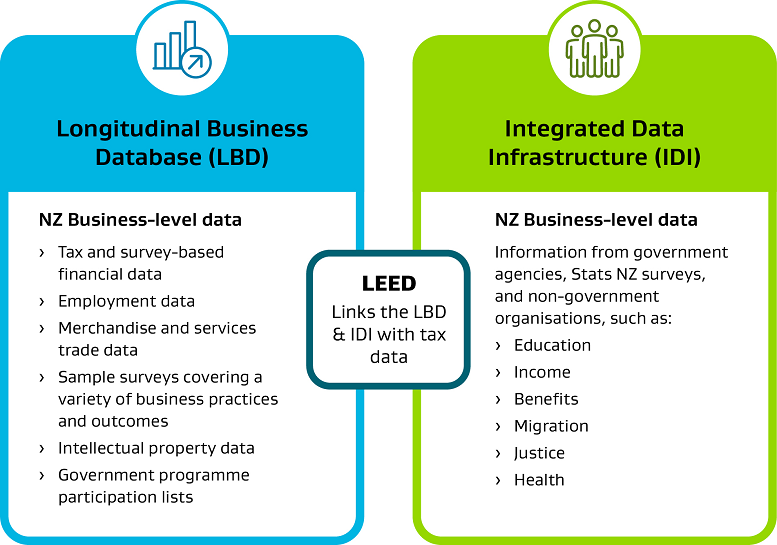Appendix A: History and methodology
On this page
History
Recognising the value and importance of screen sector reporting, and the multi-year gap in reporting, MBIE began work in 2020 on a new approach to providing key data and insights on the sector. This internal project sought to cover a similar range of topics as the previous survey, drawing on available data from Stats NZ sources (Linked Employer-Employee Database (LEED), Census, and Business Demography Statistics). In December 2021, MBIE published 'Economic Trends in the New Zealand Screen Sector'.
This report focussed on firms and employment, these being the most recent datasets from available sources in the timeframes. The report was shared with some screen sector stakeholders for feedback during development and elements identified as useful to include in future reports were:
- financial data
- detailed wage data
- information on the ethnicity of employees and contractors
A key lesson learned in the development of the 2021 report was that making use of the LBD and IDI is likely to be the best way to source most of the data required for future screen sector reports. This will ensure that there is consistency between data sources and will also allow flexibility to expand the content of the report/measures in the future.
Methodology
This work is building on the first edition of the 'Economic Trends in the New Zealand Screen Sector' report incorporating stakeholder feedback on inclusions to the report and lessons learned about the most comprehensive data sources available.
This report utilises Stats NZ’s Longitudinal Business Database (LBD) which is a research database holding de-identified microdata about businesses in Aotearoa New Zealand. The data is sourced from a range of survey and administrative data sources. Alongside this, the Stats NZ Integrated Data Infrastructure (IDI) was used to produce insights on the screen sector’s workforce. The IDI is a large research database holding de-identified microdata about people and households. As shown below, the IDI and the LBD are linked through Linked Employer-Employee Data (LEED). This means firms are linked to individuals Inland Revenue (IRD) tax data.
Tax data link

View text version of diagram
Screen Sector firms were identified from the Business Register enterprise dataset which was filtered to include only live enterprises that were valid as of March 2021, and where the enterprise ANZSIC code was consistent with the screen sector industry as defined in the 2021 report.
Financial tax data for screen sector firms was sourced from the LBD.
Sole traders, employees and owner workforce statistics including income, were identified through Inland Revenue data where people in tax data are linked through the LEED dataset to screen sector firms. Additionally, people working in the screen sector were identified using the Business Industry Classification (BIC) code where they have self-identified as being a part of the screen sector workforce.
Demographic information such as age, gender, ethnicity, regional council, educational qualifications, and immigration status were defined using personal detail data from the IDI based off the 2018 Census as well as a range of administrative datasets from the Ministry of Education, the Department of Internal Affairs etc.
Māori-owned firms were defined as firms where 50% or more of shareholder wages were paid to Directors, Shareholders or Partners of Māori ethnicity or descent.

